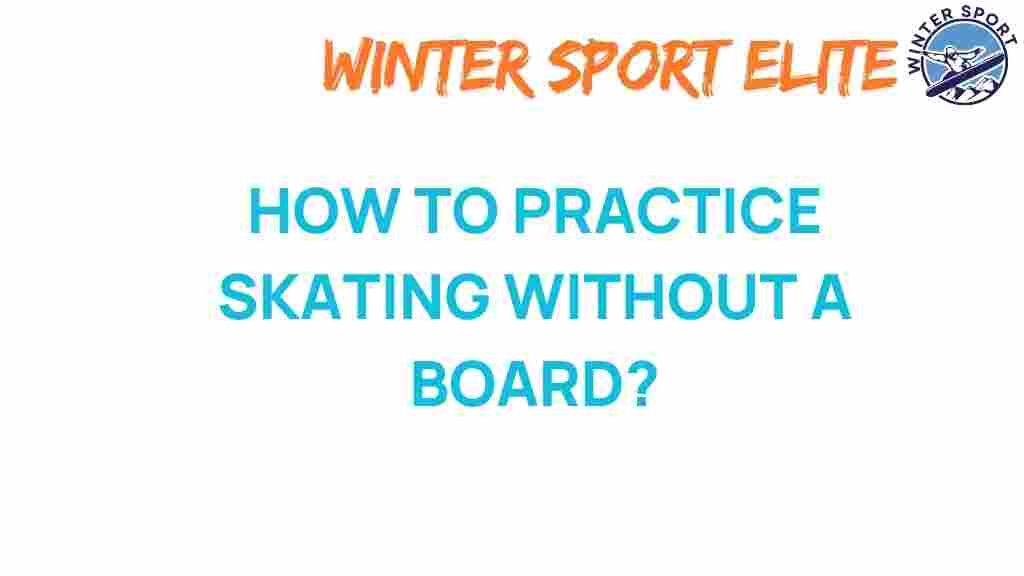Master the Art of Skating: No Board Required for Success in Skating Practice
Skating is a thrilling and dynamic sport that captivates individuals of all ages. While many associate skating with a skateboard, there are effective ways to enhance your skating skills without ever stepping on a board. In this article, we will explore various training methods that focus on skating practice, footwork, balance training, and agility. Whether you’re a beginner or an experienced skater looking to refine your skate technique, this guide will provide you with the necessary tools to elevate your skating game.
Understanding the Importance of Skating Practice
Skating practice is essential for developing the core skills needed in skateboarding. Even without a board, you can work on numerous aspects such as:
- Balance Training: Essential for stability on the board.
- Footwork: Improves your overall agility and responsiveness.
- Agility: Helps in quick movements and direction changes.
- Fitness: Enhances your overall strength and endurance.
Key Areas to Focus On
To master your skating skills without a board, consider focusing on the following key areas:
1. Balance Training
Achieving proper balance is foundational for any skater. Here are some effective balance training exercises:
- Single-Leg Stands: Stand on one leg for as long as you can, gradually increasing your time.
- Bosu Ball Exercises: Use a Bosu ball to practice standing and moving, which builds core stability.
- Balance Beam Walks: Walk along a narrow surface to improve precision and balance.
2. Footwork Drills
Good footwork is crucial for effective skating. Practice these drills to enhance your foot coordination:
- Side-to-Side Shuffles: Move laterally as quickly as possible.
- Forward and Backward Runs: Run in both directions to improve agility.
- Quick Feet Drill: Stand in one place and move your feet as quickly as possible without losing balance.
3. Agility Training
Agility is a key component of skateboarding success. Incorporate these exercises into your routine:
- Cone Drills: Set up cones and practice weaving through them.
- Ladder Drills: Use an agility ladder to perform various foot placements.
- Jumping Drills: Work on jumping over small obstacles to enhance foot speed and reaction time.
Fitness and Conditioning
Improving your overall fitness level will directly impact your skating performance. Focus on the following areas:
- Strength Training: Exercises like squats, lunges, and core workouts build the muscles needed for skating.
- Cardiovascular Fitness: Incorporate running, cycling, or swimming to boost your stamina.
- Flexibility: Stretching and yoga can enhance your range of motion and prevent injuries.
Training Methods to Enhance Your Skills
Several training methods can help you improve your skating practice without a board:
1. Visualization Techniques
Visualization can significantly enhance your skate technique. Spend time imagining yourself performing tricks and maneuvers. This mental practice helps reinforce muscle memory.
2. Video Analysis
Record yourself performing drills and analyze your movements. Compare them with professional skaters to identify areas for improvement. This feedback loop can be invaluable for refining your skills.
3. Join a Class or Workshop
Consider enrolling in a skating class or workshop. Learning from experienced instructors can provide you with tailored guidance and accelerate your progress. Look for local skate parks or community centers that offer such programs.
Troubleshooting Common Issues
As you engage in skating practice without a board, you may encounter some common challenges. Here are some troubleshooting tips:
- Difficulty Balancing: If you struggle with balance, spend more time on stability exercises and gradually increase the difficulty level.
- Poor Foot Coordination: Keep practicing footwork drills consistently to improve your coordination and speed.
- Lack of Agility: Incorporate agility drills into your routine and focus on explosive movements.
Conclusion
Mastering the art of skating without a board is entirely possible with dedication and the right training methods. By focusing on skating practice, balance training, footwork, agility, and overall fitness, you can cultivate the necessary skills to excel in this exhilarating sport. Remember, the journey to becoming a better skater takes time and patience, but with the right approach, you will see significant improvements in your skateboarding skills. For more resources on fitness and training methods, check out this guide. Embrace the challenge and enjoy the process of becoming a skilled skater, even without the board!
This article is in the category Training and created by WinterSportElite Team
